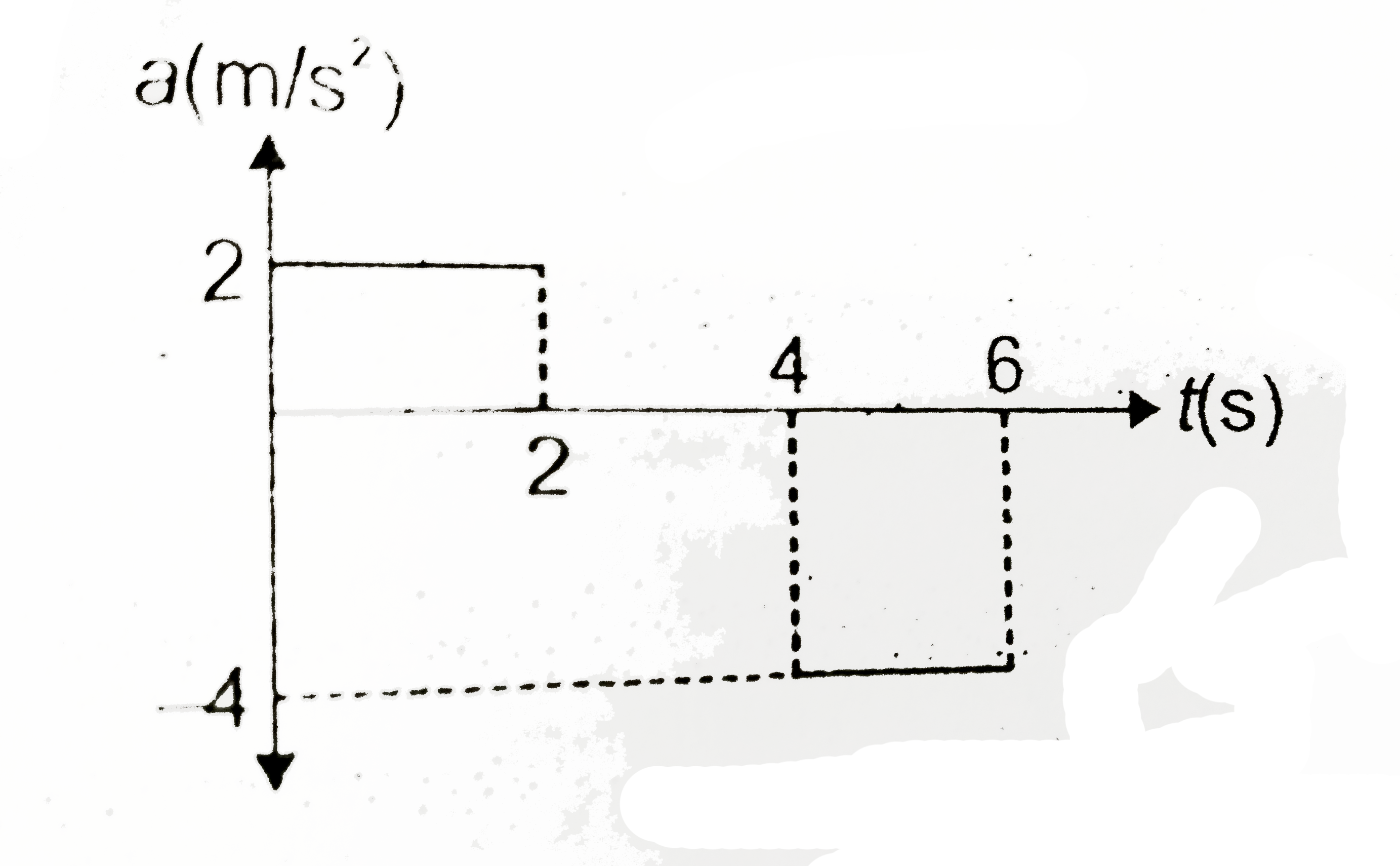A street car moves rectilinearly from station A to the next station B (from rest to rest) with an acceleration varying according to the law f=a−bx, where a and b are constants and x is the distance from station A. The distance between the two stations and the maximum velocity are
x=2ab,vmax=a√b
x=a2b,vmax=ab
x=a2b,vmax=b√a
x=ab,vmax=√ab
The correct Answer is:A
To solve the problem, we need to find the distance between the two stations (A and B) and the maximum velocity of the streetcar, given that its acceleration varies according to the law f=a−bx, where a and b are constants and x is the distance from station A.
Step 1: Relate Force to Acceleration
The force f acting on the streetcar is related to its acceleration a by Newton's second law:
f=m⋅a
Given that f=a−bx, we can write:
m⋅a=a−bx
From this, we can express acceleration as:
a=fm=a−bmx
Step 2: Use the Work-Energy Principle
The work done on the streetcar will be equal to the change in kinetic energy. The work done can be expressed as:
∫x0(a−bx)dx
And the change in kinetic energy from rest to maximum velocity v is:
12mv2
Step 3: Integrate the Force
Now we integrate the force over the distance:
∫x0(a−bx)dx=ax−b2x2∣∣∣x0=ax−b2x2
Step 4: Set Up the Energy Equation
Setting the work done equal to the change in kinetic energy gives us:
ax−b2x2=12mv2
Step 5: Solve for Maximum Velocity
At the maximum velocity, we can express v2 in terms of x:
v2=2m(ax−b2x2)
Step 6: Find the Condition for Maximum Velocity
To find the maximum velocity, we need to find when acceleration a−bx=0:
a−bx=0⟹x=ab
Step 7: Substitute Back to Find Maximum Velocity
Substituting x=ab into the expression for v2:
v2=2m(aab−b2(ab)2)
Simplifying this gives:
v2=2a2mb−b2a2b2=2a2mb−a22b=4a2−a22mb=3a22mb
Thus, the maximum velocity is:
vmax=√3a22mb=a√3√2mb
Step 8: Find the Distance Between Stations
Using the condition for the distance between stations, we substitute back into the equation:
x=2ab
Final Answers
1. The distance between the two stations x=2ab.
2. The maximum velocity vmax=a√b.
The force f acting on the streetcar is related to its acceleration a by Newton's second law:
f=m⋅a
Given that f=a−bx, we can write:
m⋅a=a−bx
From this, we can express acceleration as:
a=fm=a−bmx
The work done on the streetcar will be equal to the change in kinetic energy. The work done can be expressed as:
∫x0(a−bx)dx
And the change in kinetic energy from rest to maximum velocity v is:
12mv2
Now we integrate the force over the distance:
∫x0(a−bx)dx=ax−b2x2∣∣∣x0=ax−b2x2
Setting the work done equal to the change in kinetic energy gives us:
ax−b2x2=12mv2
At the maximum velocity, we can express v2 in terms of x:
v2=2m(ax−b2x2)
To find the maximum velocity, we need to find when acceleration a−bx=0:
a−bx=0⟹x=ab
Substituting x=ab into the expression for v2:
v2=2m(aab−b2(ab)2)
Simplifying this gives:
v2=2a2mb−b2a2b2=2a2mb−a22b=4a2−a22mb=3a22mb
Thus, the maximum velocity is:
vmax=√3a22mb=a√3√2mb
Using the condition for the distance between stations, we substitute back into the equation:
x=2ab
1. The distance between the two stations x=2ab.
2. The maximum velocity vmax=a√b.
Topper's Solved these Questions
- KINEMATICSBOOK - DC PANDEY ENGLISHCHAPTER - KINEMATICSEXERCISE - More Than One Correct
6 Videos
- KINEMATICSBOOK - DC PANDEY ENGLISHCHAPTER - KINEMATICSEXERCISE - Comprehension
7 Videos
- KINEMATICSBOOK - DC PANDEY ENGLISHCHAPTER - KINEMATICSEXERCISE - Objective
45 Videos
- GRAVITATIONBOOK - DC PANDEY ENGLISHCHAPTER - GRAVITATIONEXERCISE - (C) Chapter Exercises
45 Videos
- KINEMATICS 1BOOK - DC PANDEY ENGLISHCHAPTER - KINEMATICS 1EXERCISE - INTEGER_TYPE
15 Videos
Similar Questions
Knowledge Check
A particle starts from point A moves along a straight line path with an acceleration given by a = p - qx where p, q are connected and x is distance from point A . The particle stops at point B. The maximum velocity of the particle is
ApqBp√qCqpD√qpA body starts from rest and moves with a uniform acceleration. The ratio of the distance covered in the nth sec to the distance covered in n sec is
A2n−1n2B1n2−1nC2n2−1n2D2n+1n2
A train takes 2 h to reach station B from station A, and then 3 h to return from station B to station A. The distance between the two stations is 200 km. Find : (i) the average speed, (ii) the average velocity of the train.
View SolutionA particle starts from rest and moves with constant acceleration. Then velocity displacement curve is:
View SolutionA particle starting from rest moves with constant acceleration. If it takes 5.0 s to reash the speed 18.0 km/h find a. the average velocity during this period, and b. the distance travelled by the particle during this period.
View SolutionA body moves from rest with a constant acceleration. Which one of the following graphs represents the variation of its kinetic energy K with the distance travelled x?
View SolutionA body moves from rest with a constant acceleration. Which one of the following graphs represents the variation of its kinetic energy K with the distance travelled x?
View SolutionA train goes from rest to rest between two stations with uniform acceleration and retardation. Find the rato of maximum velocity of the average velocity.
View Solution

